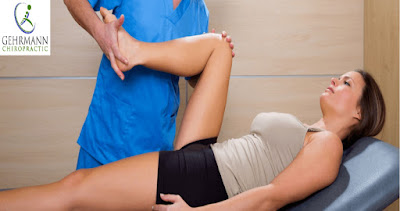Many people develop osteoporosis early in life, a bone
condition where the body produces little bone, or losses many bones. This can
result in a weak and brittle bone that often breaks from a fall or bumps
because of an unhealthy lifestyle. “Your middle-age years is an opportunity to
build strong bones and correct any unhealthy habit that can affect your bones
when you get old,” says Thomas Gehrmann. Adjusting now will help you live a
pain-free life when you get old and prevent you from surgery.
Read on as Thomas Gehrmann, a licensed chiropractor living in
Colorado Springs takes us through tips to keep your bones healthy.
Risk factors Related to Bones
1. Calcium Intake
Inadequate calcium intake lead to a reduction in bone density
and an increase in bone loss.
2. Age
As we grow older adults, our bones reduce in mass and become
weaker.
3. Genetics
You are more at risk if you have a family history of
osteoporosis.
4. Diseases
Diseases such as food disorder, arthritis, anorexia, Crohn’s
disease, and many more reduces the body’s ability to absorb calcium which often
leads to bone loss says Thomas Gehrmann.
5. Drugs
The intake of drugs such as cortisone, phenytoin,
phenobarbitone, dexamethasone, and many more results in bone damage.
How do you keep your Bones Healthy?
Here are tips for healthier, stronger bones:
1. Exercise your Body
Doing weight-bearing such as walking, climbing, or jumping
helps to build strong bone mass and healthy bones. Resistance exercise such as
lifting or pulling weight also promotes overall health and helps to maintain
good bone.
2. Change your Lifestyle
·
Stop smoking: Research has shown that smoking leads to loss of bone and
smokers show an imbalance in bone mass which increases the risk of bone
breakage.
· Reduce your alcohol intake: A regular assumption of alcohol increases the risk of bone fracture, and reduces bone density. It also interferes with how the body regulates and absorbs vitamin D and calcium says Thomas Gehrmann.
3. Increase your Calcium Intake
Calcium helps to build healthy bones and reduces the risk of
osteoporosis. 1000 mg is the calcium intake daily recommended between the age
of 19-50 and 1200 mg above the age of 50. Food like oatmeal, beans, vegetables,
and fruits such as nuts are a great source of calcium. Seafood is also packed
with protein, calcium, and a great source of fatty acid that enriches the body.
The addition of whole milk or yogurt to your oatmeal gives it an extra boost of
calcium important for your bone mass.






